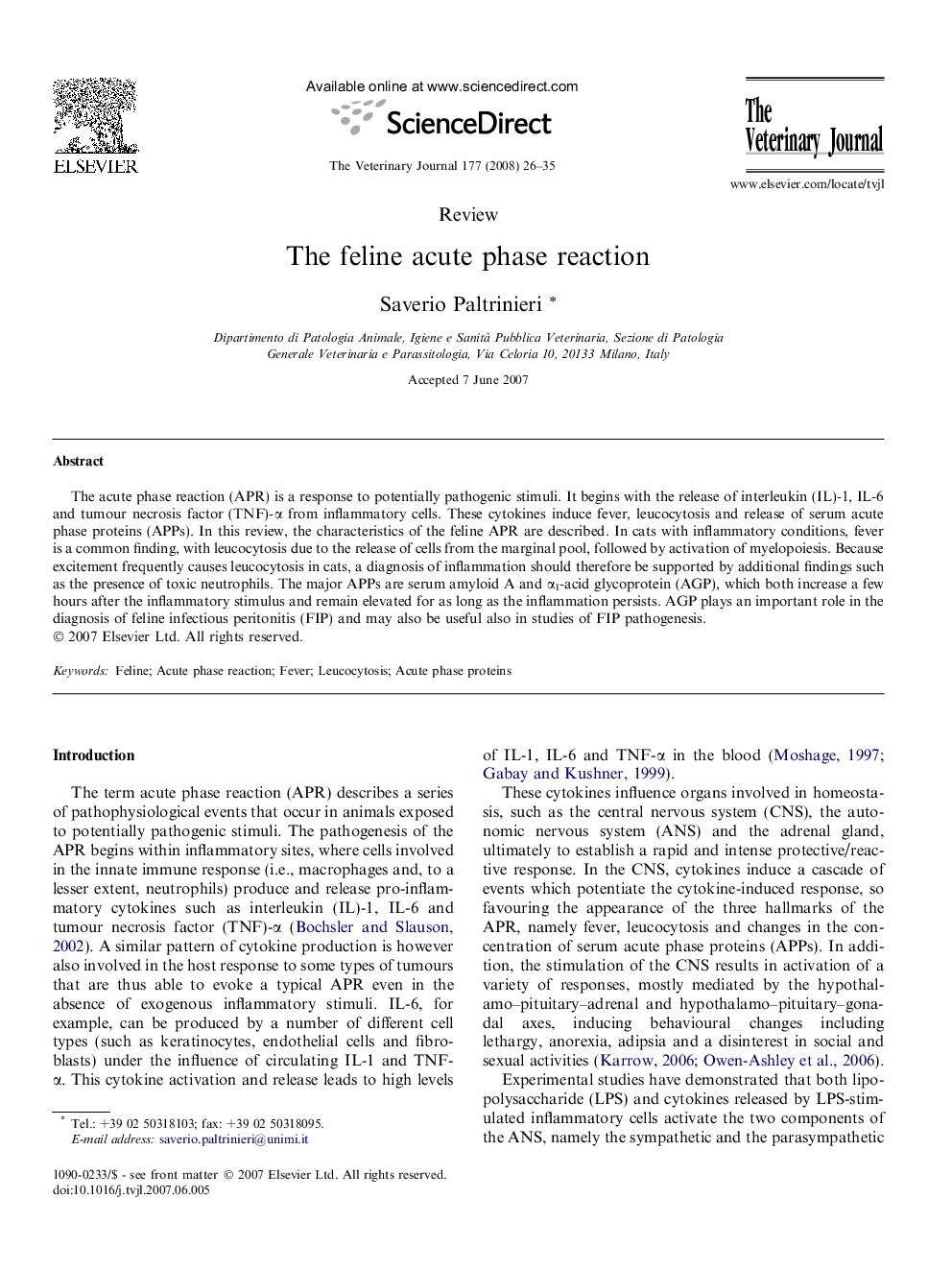| Article ID | Journal | Published Year | Pages | File Type |
|---|---|---|---|---|
| 2466098 | The Veterinary Journal | 2008 | 10 Pages |
The acute phase reaction (APR) is a response to potentially pathogenic stimuli. It begins with the release of interleukin (IL)-1, IL-6 and tumour necrosis factor (TNF)-α from inflammatory cells. These cytokines induce fever, leucocytosis and release of serum acute phase proteins (APPs). In this review, the characteristics of the feline APR are described. In cats with inflammatory conditions, fever is a common finding, with leucocytosis due to the release of cells from the marginal pool, followed by activation of myelopoiesis. Because excitement frequently causes leucocytosis in cats, a diagnosis of inflammation should therefore be supported by additional findings such as the presence of toxic neutrophils. The major APPs are serum amyloid A and α1-acid glycoprotein (AGP), which both increase a few hours after the inflammatory stimulus and remain elevated for as long as the inflammation persists. AGP plays an important role in the diagnosis of feline infectious peritonitis (FIP) and may also be useful also in studies of FIP pathogenesis.
